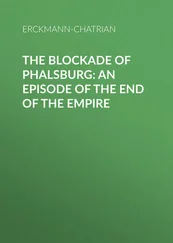Chalmers Johnson - The Sorrows of Empire - Militarism, Secrecy, and the End of the Republic
Здесь есть возможность читать онлайн «Chalmers Johnson - The Sorrows of Empire - Militarism, Secrecy, and the End of the Republic» весь текст электронной книги совершенно бесплатно (целиком полную версию без сокращений). В некоторых случаях можно слушать аудио, скачать через торрент в формате fb2 и присутствует краткое содержание. Год выпуска: 2003, ISBN: 2003, Издательство: Macmillan, Жанр: Старинная литература, на английском языке. Описание произведения, (предисловие) а так же отзывы посетителей доступны на портале библиотеки ЛибКат.
- Название:The Sorrows of Empire: Militarism, Secrecy, and the End of the Republic
- Автор:
- Издательство:Macmillan
- Жанр:
- Год:2003
- ISBN:9780805077971
- Рейтинг книги:4 / 5. Голосов: 1
-
Избранное:Добавить в избранное
- Отзывы:
-
Ваша оценка:
- 80
- 1
- 2
- 3
- 4
- 5
The Sorrows of Empire: Militarism, Secrecy, and the End of the Republic: краткое содержание, описание и аннотация
Предлагаем к чтению аннотацию, описание, краткое содержание или предисловие (зависит от того, что написал сам автор книги «The Sorrows of Empire: Militarism, Secrecy, and the End of the Republic»). Если вы не нашли необходимую информацию о книге — напишите в комментариях, мы постараемся отыскать её.
The Sorrows of Empire: Militarism, Secrecy, and the End of the Republic — читать онлайн бесплатно полную книгу (весь текст) целиком
Ниже представлен текст книги, разбитый по страницам. Система сохранения места последней прочитанной страницы, позволяет с удобством читать онлайн бесплатно книгу «The Sorrows of Empire: Militarism, Secrecy, and the End of the Republic», без необходимости каждый раз заново искать на чём Вы остановились. Поставьте закладку, и сможете в любой момент перейти на страницу, на которой закончили чтение.
Интервал:
Закладка:
Brown & Root, long known in Texas for its political connections, was acquired in 1962 by the oil-drilling and construction company Halliburton. Dick Cheney was secretary of defense when Brown & Root first began to supply logistical services to the army. According to an investigative report by Robert Bryce in the Austin Chronicle, Cheney is the author of the idea that the military’s logistical operations should be privatized. He was trying not so much to increase efficiency as to reward the private sector. He basically asked how private companies could assist the army in cutting hundreds of thousands of jobs. “In 1992, the Pentagon, then under Cheney’s direction, paid Brown & Root $3.9 million to produce a classified report detailing how private companies—like itself—could help provide logistics for American troops in potential war zones around the world. Later in 1992, the Pentagon gave the firm an additional $5 million to update its report. That same year, the company won a five-year logistics contract from the Army Corps of Engineers to work alongside GIs in places like Zaire, Haiti, Somalia, Kosovo, the Balkans, and Saudi Arabia.” 17
After the 1992 election, Cheney left the Defense Department, and between 1995 and 2000 he was the chief executive officer of Halliburton. Under his leadership, Brown & Root took in $2.3 billion in government contracts, almost double the $1.2 billion it earned from the government in the five years before Cheney arrived. Halliburton rebuilt Saddam Hussein’s war-damaged oil fields for some $23.8 million, even though Cheney, as secretary of defense during the first Gulf War, had been instrumental in destroying them. By 1999, Halliburton had become the biggest nonunion employer in the United States, although Wal-Mart soon replaced it. Cheney also appointed Dave Gibben, his chief of staff when he was at the Pentagon, as one of Halliburton’s leading lobbyists. In 2001, Cheney returned to Washington as vice president, and Brown & Root continued to build, maintain, and protect bases from Central Asia to the Persian Gulf. 18
During Cheney’s term as Halliburton’s CEO, the company advanced from seventy-third to eighteenth on the Pentagon’s list of top contractors. Its number of subsidiaries located in offshore tax havens also increased from nine to forty-four. As a result, Halliburton went from paying $302 million in company taxes in 1998 to getting an $85 million tax refund in 1999. Following the second Gulf War, while Cheney was vice president, the Army Corps of Engineers awarded the company a no-bid contract to extinguish oil well fires in Iraq. The contract was open-ended, with no time or dollar limits, and was “cost-plus,” meaning that the company is guaranteed both to recover costs and then to make a profit on top of that. Such contracts are typical of Brown & Root’s operating methods and are worth tens of millions of dollars. 19On April 4, 2003, in honor of “Big Business Day 2003,” Citizen Works, a watchdog organization created by the consumer advocate Ralph Nader, gave Dick Cheney its “Daddy Warbucks” award for eminence in corporate war profiteering.
Kosovo’s Camp Bondsteel, a Brown & Root product, is a spooky place, surrounded by a 2.5-meter-high earthen berm and nine wooden guard towers. All trees in the area have been removed to provide open fields of fire. Dominated by a mass of communications antennae, satellite dishes, and hovering attack helicopters, it has a six-mile perimeter and seems too large and permanent an installation merely to meet the requirements of peacekeeping in southern Serbia, a mission that President Clinton asserted would last no longer than six months and that George Bush said in his election campaign he wished to eliminate. More likely, Camp Bondsteel is intended to play a role in a grand strategy to secure for us Middle Eastern and Central Asian oil supplies and to control oil going to other countries.
Camp Bondsteel is actually located astride the route of the proposed AMBO (Albania, Macedonia, Bulgaria Oil) Trans-Balkan pipeline. This $1.3 billion project, if built, will pump Caspian Basin oil brought by tanker from a pipeline terminus in Georgia across the Black Sea to the Bulgarian oil port at Burgas, where it will be piped through Macedonia to the Albanian Adriatic port of Vlore. From there, supertankers would take it to Europe and the United States, thus bypassing the congested Bosporous Strait—as of now the only route out of the Black Sea by ship—where tankers are restricted to 150,000 tons. The initial feasibility study for the AMBO pipeline was done in 1995 by Brown & Root, which updated it in 1999. 20Bondsteel appears to be a base camp for what the University of Texas political scientist James K. Galbraith has called the “military-petroleum complex,” of which Dick Cheney is assuredly a godfather. 21
Not coincidentally, in February 2003, the United States also began to build two new military bases at Burgas. On November 14, 2001, the Bulgarian parliament ratified an agreement giving the United States overflight and transit rights for the war in Afghanistan; when Turkey withdrew its support of Washington’s 2003 invasion of Iraq, the United States turned to Sofia for a permanent installation, to which the Bulgarians agreed. The air force took over much of Burgas International Airport, one of three commercial airports in Bulgaria, and flew in numerous construction crews to build a garrison at a nearby beach for American military personnel. It is called Camp Sarafovo. The large number of airmen who arrived seemingly overnight are the first foreign troops to commandeer the Burgas airport since the Luftwaffe seized it in 1943. During the second Iraq war, the United States flew KC-10 and KC-135 aerial refueling missions from Burgas to support air operations over Baghdad. The port of Burgas is home to the country’s largest oil refinery and, under the terms of the Bulgarian-American agreement, supplies all the fuel required by the air force. Just a few hundred miles up the Black Sea coast, at the Romanian port of Constanta, the air force is building a similar base complex. Constanta is the center of Romania’s large oil industry. The Afghan war and second Iraq war turned out to be splendid opportunities for the United States to consolidate its oil strategy for the Balkans, the first stage of which was Camp Bondsteel. 22
Private military companies and private contractors have become indispensable to the operations of our more than 700 military bases around the world. They supply—for profit—the logistics that keep the empire operating. Camp Doha is a good example of what they supply. It is the major army base in Kuwait and has been in continuous use since the Persian Gulf War of 1991. (Camp Doha, in Kuwait, should be distinguished from the city of Doha, which is the capital of the nation of Qatar.) Camp Doha is a huge complex of heavily defended warehouses some twenty miles into the desert from Kuwait City. It has grown from two small buildings at the time of the first Gulf War into a 500-acre depot. Since December 1994, it has been the headquarters for Army Forces Central Command-Kuwait (ARCENT-KU). In June 1991, four months after Operation Desert Storm had ended, the Pentagon deployed the Eleventh Armored Cavalry Regiment from Germany to Camp Doha to serve as a rapid response force in case of renewed hostilities with Iraq. Since this unit was at the time the army’s only asset in the region, it was maintained at a maximum state of readiness, its tanks “combat loaded” with ammunition. Large numbers of vehicles and enormous backlogs of fuel and ammunition were stockpiled at the base to be used in case of an emergency.
Over the years, Camp Doha has become the army’s model ammunition depot, a prototype and paradigmatic example of a forward base for “prepositioning” the equipment, ammunition, and fuel needed for a brigade-sized armored task force. In theory, all the army needs to do is fly in the troops, who then climb into their warmed-up tanks and armored personnel carriers and head for the front lines in the oil lands of our planet. Doha was not, however, always a model base. On the morning of July 11, 1991, a defective heater in an ammunition carrier loaded with 155 mm artillery shells caught fire and exploded. The scattering shells landed on loaded vehicles and ammunition stockpiles, setting off fires and explosions that lasted the rest of the day. No one was killed, although forty-nine soldiers were injured. Among the estimated $14 million worth of ammunition and two dozen buildings destroyed were some 660 rounds of 120 mm depleted uranium shells. 23
Читать дальшеИнтервал:
Закладка:
Похожие книги на «The Sorrows of Empire: Militarism, Secrecy, and the End of the Republic»
Представляем Вашему вниманию похожие книги на «The Sorrows of Empire: Militarism, Secrecy, and the End of the Republic» списком для выбора. Мы отобрали схожую по названию и смыслу литературу в надежде предоставить читателям больше вариантов отыскать новые, интересные, ещё непрочитанные произведения.
Обсуждение, отзывы о книге «The Sorrows of Empire: Militarism, Secrecy, and the End of the Republic» и просто собственные мнения читателей. Оставьте ваши комментарии, напишите, что Вы думаете о произведении, его смысле или главных героях. Укажите что конкретно понравилось, а что нет, и почему Вы так считаете.











